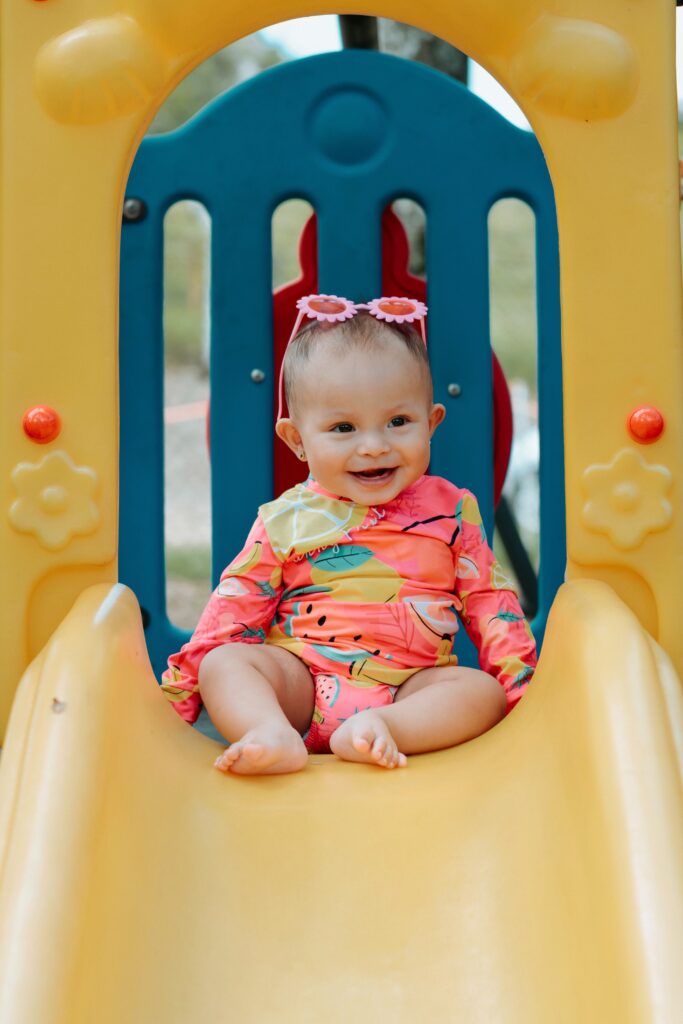Pacifier teeth, and what you need to know with Healthier Baby Today! Pacifiers, binkies, dummies, or whatever word you want for pacifiers is a lifesaver for many parents. Along with assisting newborns in self-soothing, they can also be the ideal option for little ones who love to suck on anything they can get their hands on. However, some youngsters develop oral problems due to the long-term use of pacifiers. Understanding how these comfort devices might create oral problems can assist parents in preventing their children from developing “pacifier teeth.”
A very efficient way to protect your child and yourself as a parent is to use a pacifier or thumbsucking (a non-nutritive sucking habit, in psychological terms). According to psychology, both hobbies provide a bubble of comfort, effectively shielding the baby or toddler from distressing circumstances or relaxing them when they’re bored or tired. According to the scientific literature, pacifiers are an excellent prophylactic tool against Sudden Infant Death Syndrome (SIDS). Thumbsucking or using a pacifier after the age of six, on the other hand, is usually suggestive of an emotional problem and may result in teeth misalignment, often known as Pacifier Teeth.
What is Meant By Pacifier Teeth?

Pacifier teeth are a condition that occurs due to excessive thumb sucking or pacifier use. It is an instance of malocclusion, implying that the teeth’ natural alignment has been altered. The severity and growth of pacifier teeth are determined by the duration and intensity of sucking. The power of sucking influences the severity and speed with which pacifier teeth grow. Any object your baby sucks on for an extended time might harm their teeth. The repercussions are usually evident between the ages of four and six when permanent teeth begin to replace baby teeth. Teeth formation starts in the womb and continues throughout infancy. Anything introduced in a child’s mouth for an extended amount of time at this phase can hamper their healthy oral and dental development. Pacifier teeth are a type of tooth misalignment (malocclusion) that occurs due to continuous usage of pacifiers or thumb-sucking. The underlying cause of this disease is the continual activity of sucking on an object, which disrupts the natural alignment of the teeth.
What Are the Symptoms of Pacifier Teeth?

Pacifiers can have several adverse effects on your child’s oral health. They can be significant or not, but you should not ignore them or allow the issue to worsen. One of the probable harmful effects of using pacifiers is changes in the roof of the mouth and biting issues such as crossbites, open bites, and underbites. Another unpleasant problem that your children may experience is misaligned front teeth. Other matters related to pacifier use include tongue protrusion and jaw misalignment.
- Overbite (buck teeth): A condition in which the top teeth protrude outward and cover the lower teeth.
- When the top and more deficient teeth extend outward without contacting one other, there is an open bite.
- Speech difficulties occur when the tongue’s position is altered due to tooth misalignment.
- Cavities tooth decay is another term for a cavity. It indicates that your child’s tooth has a permanently damaged spot. It can also occur in primary teeth, resulting in tooth loss. Cavities generally occur when parents compel their children to use pacifiers and then dip the pacifiers in sweat fluids. Children’s teeth are then exposed to sugar, which causes plaque to build around their teeth, inevitably resulting in cavities. If you detect or believe your children have dental cavities, you should take them to the dentist.
- Overbite is a type of misalignment of the teeth. It is caused by pacifiers in which there is considerable overlap between the top and bottom teeth. It is comparable to an open bite in that the teeth also point outward.
How To Prevent Pacifier Teeth

Pacifier teeth prevention should be on the priority list for parents concerned about their children’s oral health. Fortunately, the methods and techniques for avoiding this habit are straightforward. Thumb and pacifier sucking should be ended by the age of three. As a result, it is preferable to wean your child off the pacifier by age two. However, research has shown that discontinuing pacifiers around 6 months lessens the incidence of ear infections. So, what happens if you remove the pacifier, but your child continues sucking their thumb? First and first, it is advised to address the psychological element of the matter. Most children will ideally abandon this tendency on their own when they begin to explore their environment, socialize with other children, or are subjected to peer pressure at school. The practice is both soothing and relaxing. It is used by children to either relax as they sleep or to calm themselves in a stressful scenario (i.e., being in a new environment or being away from their parents).
As a result, you should address their anxieties, address the source of their concern, and console them. Also, every time your child goes a day without thumbsucking, employ positive reinforcement (good rewarding behavior). If your child has a habit of sucking their thumb to fall asleep, you should consider covering the thumb with a bandage or a sock. You can also request a mouth appliance from your child’s dentist. If none of the preceding methods work, your dentist can prescribe a medicinal substance with which you can coat your thumb to stop the habit.
How to Help Pacifier Teeth

If your child develops pacifier teeth, the first step is to see your dentist, who will almost certainly recommend you to a pediatric orthodontist. The latter will be able to answer your questions and advise you on the best course of action. Whether pacifier teeth repair themselves varies from case to instance, but it can also depend on when pacifier use was discontinued. Detecting and correcting dental misalignment before your child reaches two enhances the odds of self-correction in 6 months. Adult teeth grow beneath baby teeth around four, making orthodontic tools the sole practical solution. One of the following appliances may be recommended by your pediatric orthodontist:
- Braces – Braces are used to address a variety of malocclusions caused by pacifiers. This oral gadget can help your children in various ways, from making minor jaw adjustments to fixing crooked teeth and resolving bite malocclusion issues.
- Clear aligners are used first, then by retainers.
- Tongue cribbing
- Bite cubes
- Surgery – Surgery may be considered a remedy for pacifier teeth damage in rare exceptional cases. Surgery is conducted when one or more teeth must be extracted, indicating that pacifier teeth should be considered a significant issue.
- Chin cups with a vertical pull
- High-pull helmets
- Palatal Expansion Devices – palatal expander is a mouthpiece that widens the upper jaw. As a result, the natural posture of the jaw and teeth is restored. Palatal expanders can also help to straighten the roof of the mouth. The length of time someone will utilize a palatal expander is determined by the state of their teeth due to pacifier use. It might last anywhere from a few months to several years.
It goes without saying that halting the habit of thumbsucking or pacifier use is critical to preventing the disease from worsening.
Which is Worse for Pacifier Teeth? – Pacifier or Thumb Sucking
Thumb sucking can damage your child’s teeth as pacifier use. It can cause problems with your child’s teeth, particularly if it persists past four. However, for parents, the thumb-sucking behavior can be more challenging to eliminate, implying that it will likely endure longer. And the likelihood of this behavior returning is greater than that of using a pacifier again.
Pacifier use should be discontinued by the age of four. After that, the likelihood of getting pacifier teeth increases dramatically. As a result, you should begin gently discouraging your children from taking it once they reach the age of 12 months. However, the decision is ultimately up to you as a parent because you will know when it is the right time to begin weaning your child off the pacifier. As a result, your children will always have attractive smiles and will not have overjet teeth, open bites, overbites, or buck teeth.
A Better Bite
Pacifiers are one of much beneficial parenting aids in infancy because of the benefits they bring. While you should not allow your child to take a pacifier past two, there is no reason to throw away all of their binkies just yet. However, it would be best to begin weaning pacifier use after 24 months — preferably by 48 months — to reduce the risk of oral disorders that may necessitate orthodontic treatment.


